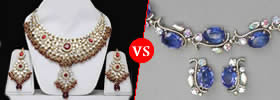Difference between Ovum and Sperm
Key Difference: Sperm is the gamete that is produced in the testis of a male, whereas ovum is the gamete that is produced in the ovary of a female. The gametes can be described as a reproductive cell bearing a single set of unpaired chromosomes.
Ovum is also known as an egg cell. These are the cells that forms a part of woman’s reproductive system and are one of the largest cells in the female body. On the other hand, sperm cells are the complete opposite of egg cells. The sperm is one of the smallest cells in the male body. They are made up of a small nucleus with a small amount of cytoplasm, some mitochondria and a long tail. Egg cells and sperm cells are different from each other in nature, origin and purposes. Both of these cells play an important part in human reproduction and absence of any one would not allow reproduction to take place. Each cell is embedded with 23 chromosomes and when they fuse together the chromosomes pair up with each other and form a baby.
 Ovum do not require a microscope to be seen and can be visible to the naked eye. It is also round in shape. The ovum has a large amount of cytoplasm (or nucleus fluid) in which the nucleus is dissolved until just before conception.
Ovum do not require a microscope to be seen and can be visible to the naked eye. It is also round in shape. The ovum has a large amount of cytoplasm (or nucleus fluid) in which the nucleus is dissolved until just before conception.
The nucleus inside the ovum is active and internally mobile. It has maximum mobility inside the cell due to the cytoplasm, while outside the nucleus is not mobile but goes in any direction, in which it is pulled. Ovum mainly consists of cell fluids. Ovum also has an active metabolism as substances are absorbed and released. An ovum has a limited life-span and once they are released from the ovaries they can only stay alive for about 12 to 24 hours and if they remain unfertilized they dissolve in the fallopian tube. There is also no way to be able to store ovum, but advance research has been able to grow ovum using stem cell research.
On the other hand, sperm cells are the complete opposite of ovum. Maybe, that’s where we get the notion that males are opposites from females. The sperm is one of the smallest cells in the male body. They are made up of a small nucleus with a small amount of cytoplasm, some mitochondria and a long tail. They have a straight shape, compared to the round one of the egg cell.
 A sperm cell consists of a head, a mid-piece and a tail. The head contains the nucleus with densely coiled chromatin fibers, surrounded anteriorly by an acrosome, which contains enzymes used for penetrating the female egg. The mid-piece has a central filamentous core with many mitochondria spiraled around it, used for ATP production for the journey through the female cervix, uterus and uterine tubes. The tail or "flagellum" executes the lashing movements that propel the spermatocyte. The sperm cells are externally active and use their tails to swim against stream of fluid in the oviduct. Sperm cells are also metabolically passive and do not actively release and absorb substances.
A sperm cell consists of a head, a mid-piece and a tail. The head contains the nucleus with densely coiled chromatin fibers, surrounded anteriorly by an acrosome, which contains enzymes used for penetrating the female egg. The mid-piece has a central filamentous core with many mitochondria spiraled around it, used for ATP production for the journey through the female cervix, uterus and uterine tubes. The tail or "flagellum" executes the lashing movements that propel the spermatocyte. The sperm cells are externally active and use their tails to swim against stream of fluid in the oviduct. Sperm cells are also metabolically passive and do not actively release and absorb substances.
Unlike egg cells which stop after a woman reaches menopause, sperm cells are produced from puberty until the man dies. They also have a longer life-span compared to the egg cells; they can survive up to 3-5 days in a woman’s womb and can also be stored by freezing them to a certain temperature. Sperm cells are produced by a man’s testicles. While egg cells are produced one at a time each 28 days, each ejaculation contains millions of sperm cells.
|
|
Ovum |
Sperm |
|
Definition |
Ovum is the gamete that is produced in the ovary of a female. |
Sperm is the gamete that is produced in the testis of a male. |
|
Anatomy |
Ovum has a nucleus that is surrounded by cytoplasm, which is guarded by the zona pellucid and the follicular cells. |
A sperm cell consists of a head, a mid-piece and a tail. The head contains the nucleus with densely coiled chromatin fibers, surrounded anteriorly by an acrosome, which contains enzymes used for penetrating the female egg. The mid-piece has a central filamentous core with many mitochondria spiraled around it, used for ATP production for the journey through the female cervix, uterus and uterine tubes. The tail or "flagellum" executes the lashing movements that propel the spermatocyte. |
|
Produced in |
Ovum is produced in the ovary of a female human being. |
Sperm is produced in the testicles of a male human being. |
|
Size |
Larger compared to sperm cells. Approximately 0.15 to 0.2mm in size. |
It is very small in size compared to ovum. It is also considered as the smallest cell in the body. |
|
Appearance |
The ovum is one of the largest human cells in the body. It is round in shape and has the largest volume in relation to the surface. The cell consists of a large amount of cytoplasm in which the nucleus dissolves until just before conception. |
The sperm has an oval head on the top and has a rigid middle with a slimly tail in the back to allow it to swim. It is straight in shape. |
|
Shape |
Round, oval or a circle. |
Straight. |
|
Produce in numbers |
Only a single ovum is produced during once menstruation cycle. |
Millions of cells are released during a single ejaculation. |
|
Temperature |
Requires warm body temperature for sustenance. |
Requires approximately two degrees lesser than the body temperature for sustenance. |
|
Time of formation |
Ova are usually formed in a female before birth. |
Sperm cells form during puberty. |
|
Life-span |
Ovum has a short life span. If an egg cell is not fertilized 12 to 24 hours after its release from the ovary, it will dissolve. |
Sperm cells have a longer life span. Once ejaculated in the female womb they can survive for 3-5 days. |
|
Production till |
Ovum form before birth and are active only till menopause. |
Sperm cells start being produced from the body from puberty till death. |
|
Storability |
Cannot be stored. |
Can be frozen and stored. |
|
Metabolism |
Active. |
Less active. |
|
Mobility |
Ovum contains cytoplasm, which allows them to be active internally. After the nucleus is released from the follicular cell, it becomes less mobile. |
Sperm are active and externally mobile. They use their tails to swim against the stream of fluid in the oviduct to the fallopian tube. |
Image Courtesy: medical-dictionary.thefreedictionary.com, abpischools.org.uk









Comments
Maria
Wed, 11/01/2017 - 10:11
Hi Maria, if you are looking to cite the page, please have a look at out Citation guidelines here: http://www.differencebetween.info/citation. Thank you.
dbadmin
Wed, 11/01/2017 - 14:37
Add new comment